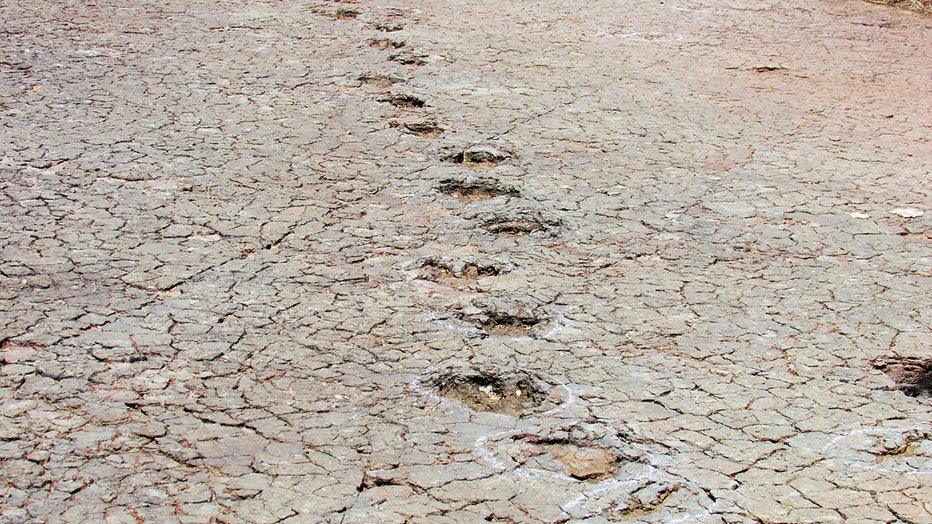‘Almost identical’ dinosaur tracks found in Brazil and Africa. Here’s what that proves

Theropod footprint from Sousa Basin, Lower Cretaceous of Northeastern Brazil (left). Theropod tracks from the Koum Basin in Cameroon (right). (Ismar de Souza Carvalho / SMU / FOX Weather)
More than 260 dinosaur footprints discovered in Brazil and Cameroon provide further evidence that South America and Africa were once connected as part of a giant continent millions of years ago, according to a recent study.
Scientists estimated that the footprints were originally made 120 million years ago about 600 miles apart, or roughly the distance between Dallas and Nashville, on the supercontinent known as Gondwana.
Today, the fossilized tracks are more than 3,700 miles apart on opposite sides of the Atlantic, with some in eastern Brazil and the others in northern Cameroon.
DINOSAUR FOSSIL REVEALED BY HEAVY RAIN IN BRAZIL
"We determined that in terms of age, these footprints were similar," said SMU paleontologist Louis L. Jacobs, who led the study. "In their geological and plate tectonic contexts, they were also similar. In terms of their shapes, they are almost identical."

Map with Brazil and Cameroon highlighted. (FOX Weather)
Because of these matching environmental conditions, scientists concluded that the creatures walked along a corridor, or essentially a dinosaur superhighway, that crossed an area of what would later split apart and become two continents.
"One of the youngest and narrowest geological connections between Africa and South America was the elbow of northeastern Brazil nestled against what is now the coast of Cameroon along the Gulf of Guinea," Jacobs said. "The two continents were continuous along that narrow stretch, so that animals on either side of that connection could potentially move across it."
That corridor was covered in sediment, allowing for the dinosaurs' footprints to be preserved for millions of years.

A long ornithopod trackway at Passagem das Pedra, Sousa Basin preserved in floodplain deposits of Lower Cretaceous. (Ismar de Souza Carvalho / SMU / FOX Weather)
While a few of the footprints were likely made by dinosaurs known as ornithischians or long-necked sauropods, study co-author and Southern Methodist University research associate Diana P. Vineyard said most of the footprints were created by three-toed theropods, or dinosaurs that resemble the Tyrannosaurus rex.

